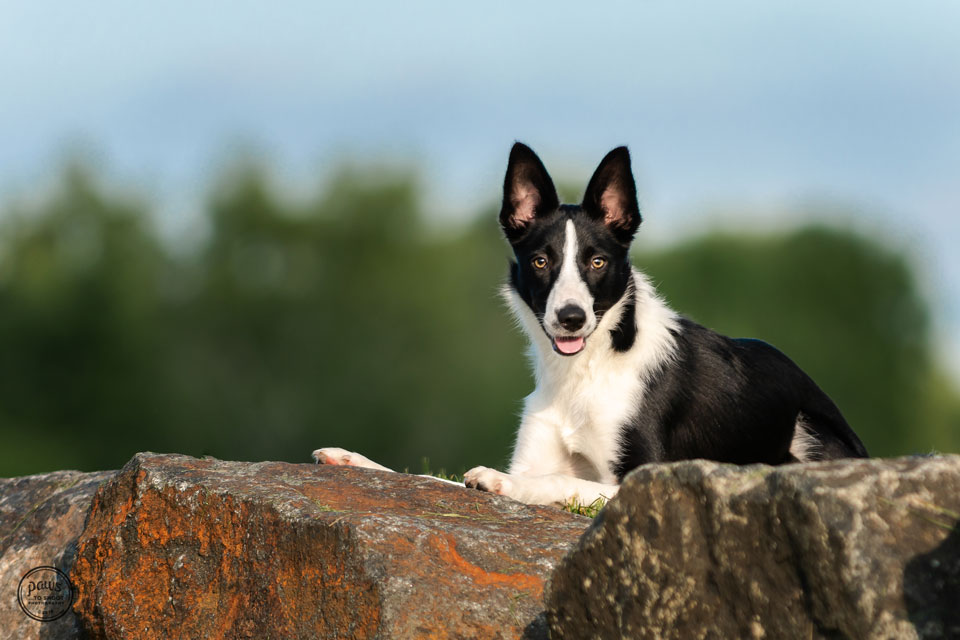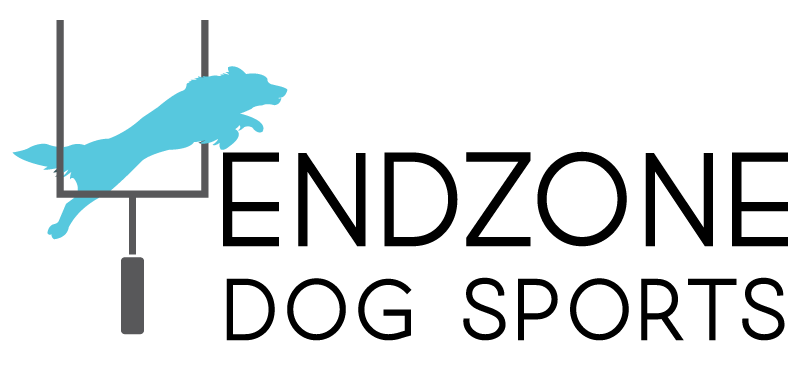
Photo by Paws To Shoot – Copyright 2018
You have a new puppy! How exciting and scary at the same time. Looking ahead to whatever dog sports you actively compete in, it can feel overwhelming to think about how many skills your future partner needs to learn. Where do you start?
Besides exposing your puppy to lots of positive experiences, what training skills are essential in building the foundation for learning in dog sports?
Here is a list of essential skills that I teach my dogs before specific sports skills are introduced:
Reinforcement Strategies: To train effectively, the placement of reinforcement is crucial. Planning and teaching different methods of rewarding the dog using location specific event markers and clean loops will make training dog sport skills much more straightforward.
Transport behaviors: To keep training effective and to avoid building unwanted behaviors, teaching specific transport routines will keep your dog busy and focused as you move from the end of one repetition to the beginning of the next repetition.
Station behavior: There are countless reasons for teaching your dog to go to and remain on a station until released. You can use the station to replace a stay for any exercise. It can be used to keep your dog focused when you are distracted (talking to an instructor or setting up a course, etc.) You can also use it to train multiple dogs. It’s a great way to teach your dog how to wait and learn self-control.
Down stay: Having a down-stay behavior trained gives you flexibility when you want your dog to take a break. You don’t need any props for this skill, which makes it portable. The down-stay helps the dog learn how to control movement and control arousal levels. It helps your dog learn to relax.
Event Marker Cue Discrimination: Teaching your dog different marker cues adds predictability and a rich variety of ways to reinforce behaviors during training sessions.
Relaxing in a crate: Dog sports are usually an all-day event. Your dog will need a place to relax between performances. If your dog isn’t comfortable being alone in a crate, it will be taxing and challenging to compete at dog sports competitions.
Standby behavior: This is a trained default behavior when the handler pauses for a moment while making eye contact with the dog who is in front of the handler. The trainer’s physical cues prompt the dog to freeze in a stand position with eye contact, waiting for information.
The importance of the standby behavior.
The longer I train dogs and the more students I work with, the stronger I feel about this skill’s importance. You might wonder what the heck is a Standby behavior? What does it look like?
This is what it looks like:
The physical presentation that cues this behavior from Differ is:
- I make eye contact with her.
- I place my hands at my sides.
- I position my feet, so they are not aligned.
These physical cues cue Differ to freeze in a stand position with eye contact and wait for information.
Why is this such an important skill?
One of the biggest struggles in dog training is teaching duration behaviors. Usually, when there is a moment of stillness from the handler, the dog starts to offer behaviors. There are times you might want your dog to offer behaviors. But if you are training a specific skill and your dog continues to offer other behaviors, there is probably confusion and frustration involved. The dog might expect a reward. When that doesn’t happen, frustration and lack of understanding cause the dog to offer different behaviors in the hope of performing correctly and accessing reinforcement.
If your dog offers other behaviors when you pause a moment, it will be challenging to teach duration behaviors, like stays, position changes, fronts, or your dog merely waiting for the next cue from you. And to help the dog perform correctly, you might have to provide an abundance of additional help, extra information, or encouragement. It probably means your dog is uncomfortable when you are quiet.
A quiet and attentive handler should make the dog feel good, and the dog should assume the current behavior is correct – not something to “fix.” The dog should believe that reinforcements will be accessible eventually while the trainer is quiet.
Wouldn’t you prefer that the default behavior from your dog when there is a pause is to wait for information from you? Think of how easy that would make most of the training?
Why do dogs start offering behaviors?
Here are a few confusing human behaviors that contribute to the dog offering behaviors. When the trainer:
- Stares at the dog with the expectation that the dog should “fix” a mistake. This causes the dog to learn to respond to their humans staring at them while pausing to mean they should try a different behavior. It ultimately conveys to the dog they are wrong. It teaches the dog to be uncomfortable when the trainer stares.
- Gives a verbal cue to the dog immediately when they make eye contact. They learn eye contact means action. This causes the dog to feel the urgency to do something active. Usually, the behavior is something that the dog loves to do or has a history of reinforcement for performing.
- Doesn’t use event markers. When event markers are not used, the dog will find predictors that food (or other rewards) are coming. Those predictors won’t be nearly as accurate and will usually mark unwanted behaviors. When the dog is unclear about what behavior is being rewarded, there will be confusion and frustration. Clean event markers are precise and will communicate the desired behavior that is being reinforced.
As trainers, we must be consistent with our physical cues while training our dogs. If you want stillness from your dog, then staring at your dog should not cue movement.
How do I teach a stand by behavior?
You will need a clicker or an event marker. Have food in your hands.
The dog will be positioned in front of you.
Your presentation (what you look like when you expect this behavior) is 1) hands at your sides, 2) eye contact, 3) your feet should not be lined up. One foot is a little forward from the other.
You will be training two separate behaviors simultaneously and moving between them, depending on what your dog is doing. The two behaviors are 1) dog in a stand position, 2) eye contact from the dog. If your dog sits or downs, then focus on getting them into a stand. Click early and reward the head in a lowered position to make it inconvenient for them to want to sit. If your dog is standing, you can start to look for eye contact.
Here is a video of me teaching this to Differ, She was only 4 months old in this video.
In this session, I’m working on the stand.
In this session, I’m working on eye contact:
Changing habits can be hard!
It takes practice and awareness to change our habits. When something goes wrong in our training, it can feel natural to stare and wait for the correct behavior. However, your dog will be emotionally better off if you immediately intervene by repeating or giving an additional cue to help your dog perform correctly. When you give additional information, it will prevent frustration and confusion and stop your dog from beginning a guessing game.
Wouldn’t you rather have a dog that freezes and focuses on you intently when you make eye contact? That freeze behavior can help you with duration behaviors and teaching stimulus control – like start line stays or sit stays in obedience.
Teaching your dog a standby behavior will open a whole new world of communication and knowledge for both you and your dog. Once you have that behavior, you will understand how powerful it is for long term training.
Want to learn more?
If you want to learn how to teach a standby behavior in more detail – or any other listed essential skills, consider joining my AG190 class that starts on December 1st. Registration opened on November 22nd, and it closes on December 15th. Working spots have been taken, but Silver (limited working) and Bronze (observing) spots are available. To learn more about this class, visit this link: https://www.fenzidogsportsacademy.com/index.php/courses/25979.


0 Comments